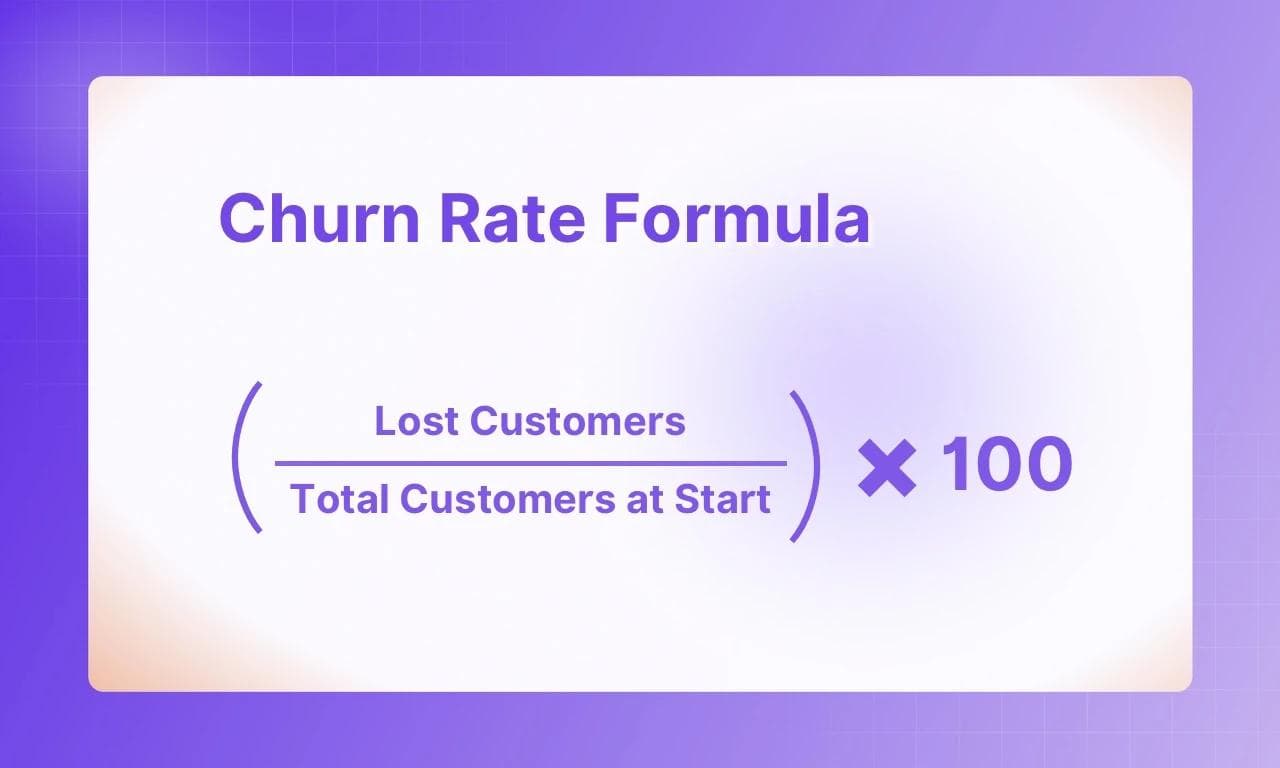
You could have the most innovative dapp on the Internet Computer (ICP), but if your users are quietly disappearing, the long-term sustainability of your project is at risk. That’s why churn rate has become such a vital tool for developers. And now, with the integration of Artificial Intelligence (AI), we’re entering a new phase, where insights become proactive rather than reactive.
Churn Rate: The First Indicator of Trouble
Churn rate, put simply, measures how many users stop engaging with your platform over a certain period. A high churn rate is like a silent alarm: it signals that something isn’t working, maybe your UI is clunky, your smart contract interactions are too complex, or your value proposition isn’t clear.
On Web2 platforms, average churn rates vary by industry, but for SaaS products, the benchmark is usually around 5–7% monthly churn. In Web3, where switching costs are low and users are still exploring ecosystems, churn can spike much higher, with some blockchain projects reporting churn rates of over 15% per month.
Now imagine you’re building on the Internet Computer. Your product is fully on-chain, with data stored directly inside canister smart contracts, not on some external server. This gives you a rare advantage: transparent, real-time access to behavioural data that reflects how users are truly interacting with your dapp. But raw data isn’t enough, you need help turning it into actionable insights.
That’s where AI steps in.
AI Adds Intelligence to Churn Analysis
While churn rate gives you a rearview mirror perspective, AI gives you a windshield, a forward-looking view that can predict and prevent churn before it becomes a problem.
AI models can be trained to analyse signals like:
- Declining activity to over time (e.g., fewer smart contract interactions)
- Shortened session durations
- Inactive wallet connections
- Abandoned transactions or failed function calls
Once these signals are detected, the system can generate churn risk scores for each user. For example, if a user who previously checked in daily hasn’t interacted with your app in five days, AI can flag them as high risk and suggest a targeted re-engagement strategy.
According to Salesforce’s State of the Connected Customer Report, 66% of customers expect companies to understand their needs and behaviours. AI makes this possible, even in a decentralized environment.
The Internet Computer Advantage
The Internet Computer Protocol (ICP) offers a unique infrastructure that makes AI-churn integration even more effective:
- Data stored on-chain in canisters means your user activity is already accessible without needing external APIs.
- Chain Fusion allows AI models to interact with multiple chains and data sources, enhancing prediction accuracy.
- Developers can run AI logic directly in canisters or through trusted, decentralized oracles for real-time feedback loops.
Let’s say you integrate an AI-powered churn detection tool into your ICP-based NFT platform. The AI identifies that 12% of users who previously minted or traded NFTs haven't logged in for two weeks. It then analyses the likely reason—perhaps recent drops weren’t engaging, or transaction fees were too high. Based on that, it suggests interventions: feature fresh collections, airdrop limited-time access passes, or gamify loyalty.
This proactive strategy isn’t theoretical. It’s already being used across industries: companies that use predictive churn models report up to 25% improvements in retention, according to a report by McKinsey & Company.
Caffeine AI Meets ICP Dapps
Imagine combining your ICP project with a decentralized AI service like Caffeine AI. You connect your canisters to Caffeine’s learning models, and it begins to:
- Track wallet behaviours
- Analyse transaction frequency
- Predict disengagement cycles
Then, you link the AI's output to your smart contract logic. When a high-risk user is detected, the system automatically sends a personalised in-app message or unlocks a limited-time incentive, like a rare NFT or event ticket.
This isn’t just automation, it’s intelligent user engagement powered by a decentralized backend.
In decentralized ecosystems where trust and community are everything, retaining users is even more crucial than acquiring new ones. AI helps you move from gut-feeling decisions to data-backed, user-centric actions.
Conclusion
If you’re building on the Internet Computer, it’s time to think bigger than churn calculations alone. Yes, calculating how many users you’ve lost is important—but knowing why they left, and who might leave next, is what sets successful projects apart.
You don’t need a PhD in machine learning to benefit. Tools and services are emerging that make AI integration into dapps increasingly accessible. What matters most is your mindset: are you building reactively, or proactively?
By combining the immutability of ICP’s architecture with the predictive intelligence of AI, you’re not just keeping users—you’re building with them.
So the next time you're checking your dashboard, don't stop at counting who left. Use AI to understand why—and to make sure the next dashboard tells a better story.
Article by: Mana Lamja